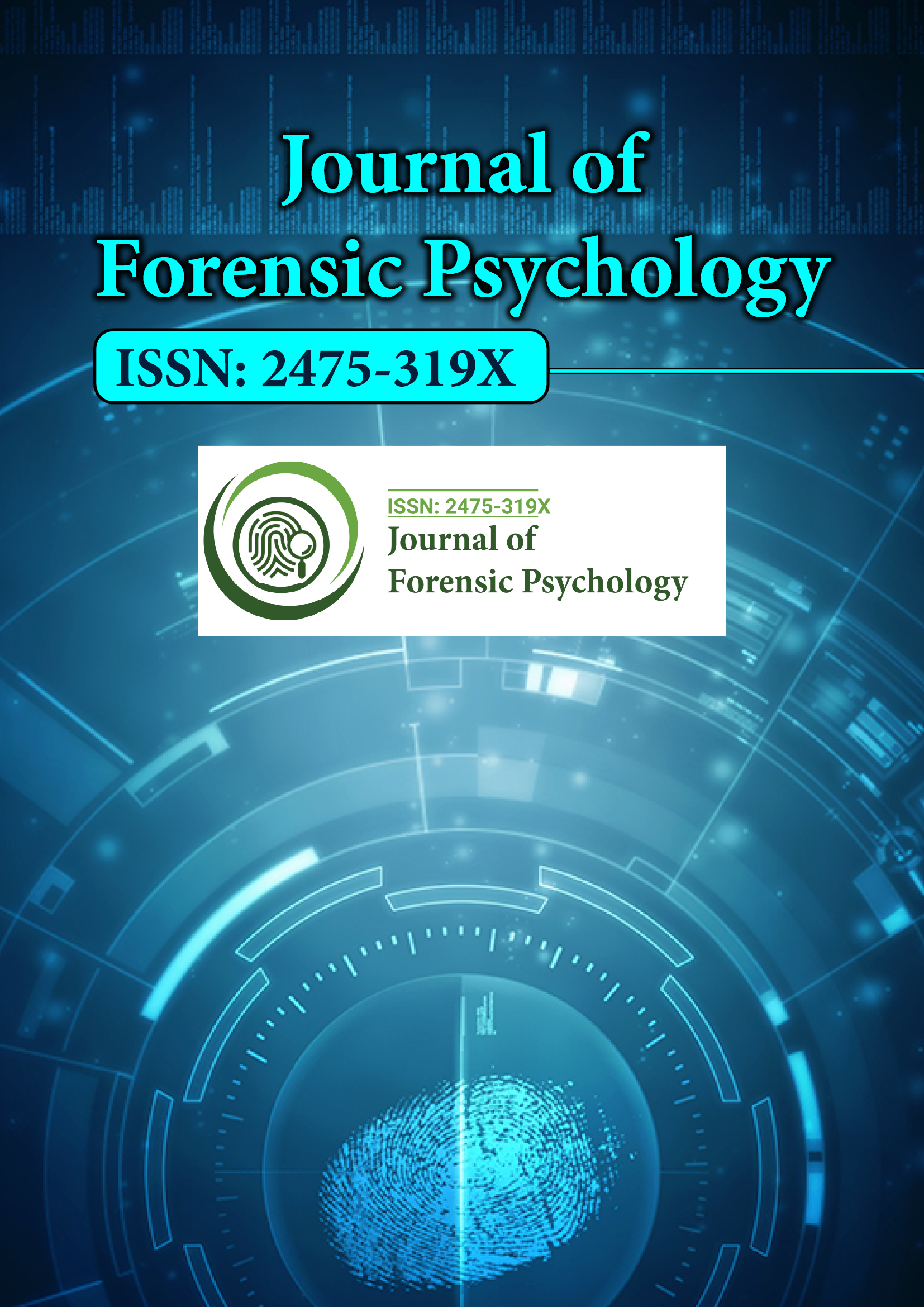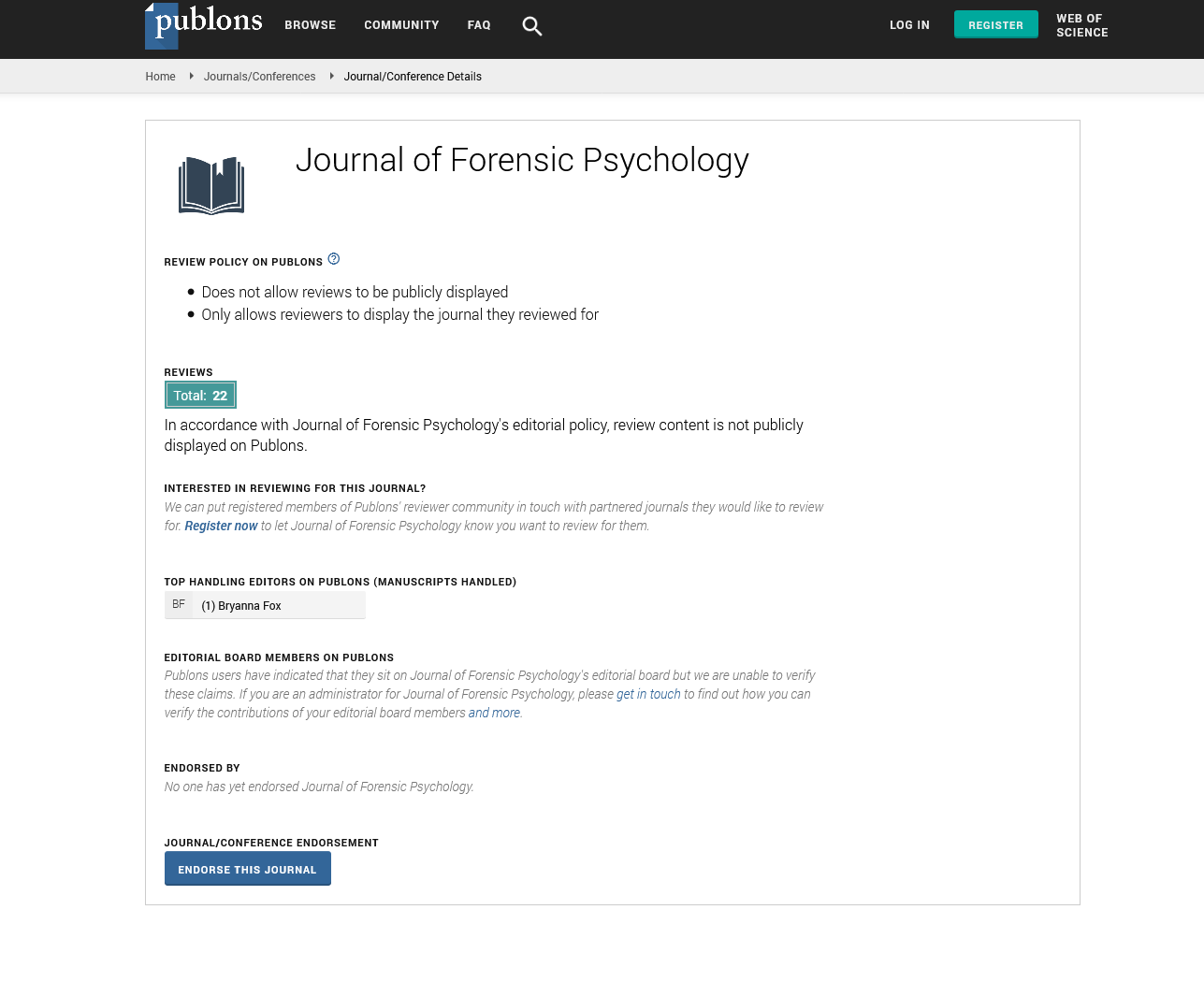Indexed In
- RefSeek
- Hamdard University
- EBSCO A-Z
- Publons
- Geneva Foundation for Medical Education and Research
- Euro Pub
- Google Scholar
Useful Links
Share This Page
Journal Flyer

Open Access Journals
- Agri and Aquaculture
- Biochemistry
- Bioinformatics & Systems Biology
- Business & Management
- Chemistry
- Clinical Sciences
- Engineering
- Food & Nutrition
- General Science
- Genetics & Molecular Biology
- Immunology & Microbiology
- Medical Sciences
- Neuroscience & Psychology
- Nursing & Health Care
- Pharmaceutical Sciences
Abstract
Analysis of Psychological Signs of Authenticity when Reproducing Events by the Researched Person in Criminal Proceedings
This article considers some aspects of the psychological assessment of the testimony reliability in the practice of conducting analysis of the narrative by forensic psychologists. The article discusses some of the signs of authenticity from the general list in the Technique for psychological assessment of the testimony reliability in legal practice of Shapovalov V. A. The author studied 19 transcripts of actual investigative actions that were divided into two groups: conditionally reliable (true) and conditionally unreliable (false). This two group of the transcripts were analyzed according to the presence or absence of the following signs of the reliability of the narrative: visual information; auditory information; information related to smells; information related to tastes; physical sensations; description of material objects, living beings, features of the environment; description of one’s own actions; linking of one’s actionsin time; linking of one’s actionsin space; emotional states and their manifestations; physiological needs, states, their manifestations; thoughts that arose at the time of the event; description of one’s appearance; description of one’sintentions (motives); distinguishing marks; details. The features were fixed and a mathematical analysis of the identified features was carried out. This research is needed to be done to expand the scientific substantiation of the methods and techniques used by forensic psychologists while conducting an assessment of the reliability (or authenticity) of the narrative.
Published Date: 2022-09-09; Received Date: 2022-08-09

